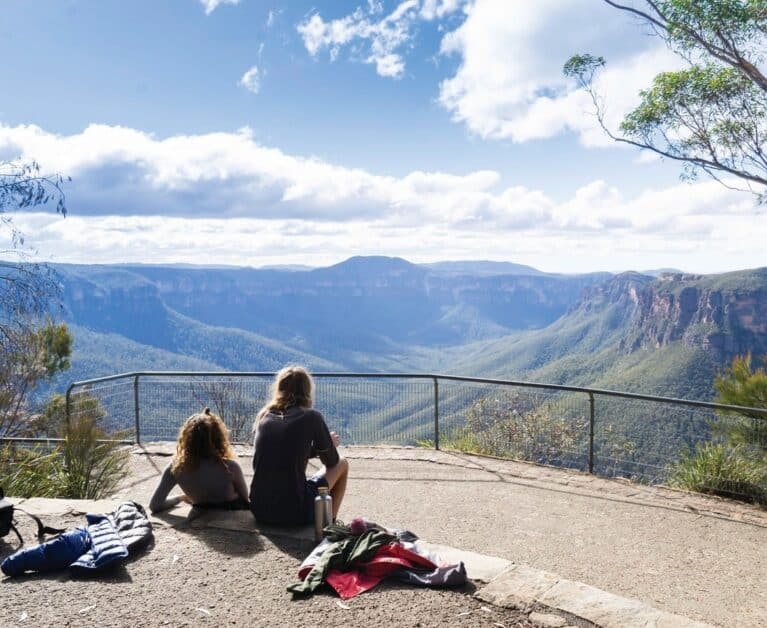Kimberley, Western Australia: Exploring Gibb River Road and the Wild Outback
PUBLISHED June 26th, 2018 06:00 am | UPDATED May 10th, 2023 02:20 am
There’s so much more than the amazing food and drink culture in Sydney and the coffee scene in Melbourne; travelling in Western Australia opens your mind because it is a region that reveals much about the immensity and singularity of our planet’s oldest continent. In times of over crowds, it’s one of the last frontiers. It’s so vast that you can come back – year after year – and explore different pockets of this land that is a pot of gold for anyone in search of adventure.
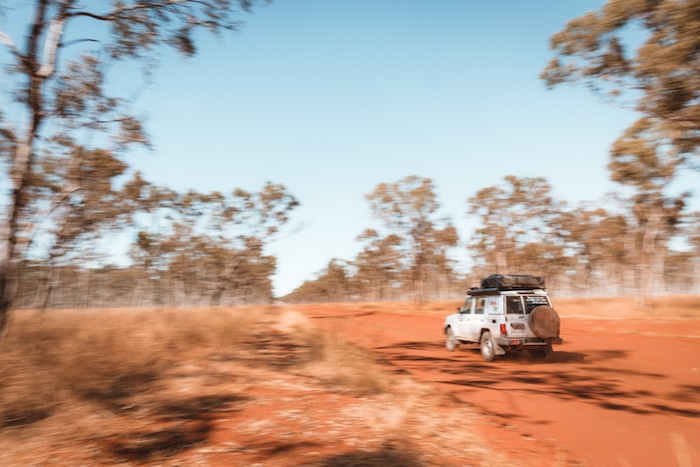
Go on a Road Trip Across Kimberley
Ten times the size of Switzerland, – an area of million plus acre cattle stations with only three towns of populations over 2,000 – Kimberley is one of the most remote regions one can ever visit, even for Australians. Visitors outside of Australia have to fly to Perth then hop on a domestic flight to Broome, a beach resort town in the region, which is where we started our road trip. In the immense expanse, Kimberley is removed from the rest of the continent, lost somewhere in between Broome and Darwin.
For six days and six nights, we sit in a land cruiser and watch the same vast and flat horizon for hours and take in the never-ending road, the sunshine, the red earth. It’s dry as hell. I feel the dust getting under my skin and the sun warming my bones. We drive across iconic highways and go deep into the prehistoric outback, a geological wonderland in North Western Australia.
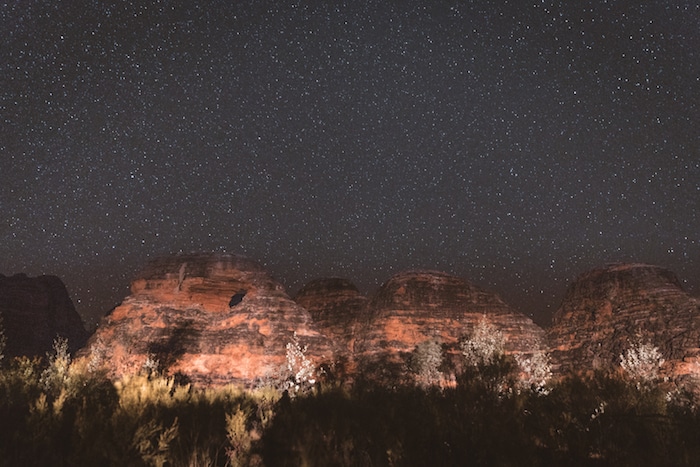
First, we traverse the Great Northern Highway – whose paving was finally completed in 1986 – for about 500km. We end up somewhere near the Mueller Ranges and set up camp on top of our car just after sunset. We sleep under the stars, over the moon, facing the Milky Way. The sky is so bright and feels so close that we have the impression we’re part of the solar system. It’s one of the darkest night skies in the world, yet there’s a sensational feeling of experiencing unadulterated pleasure on the edge of the world.
See the iconic Bungle Bungles
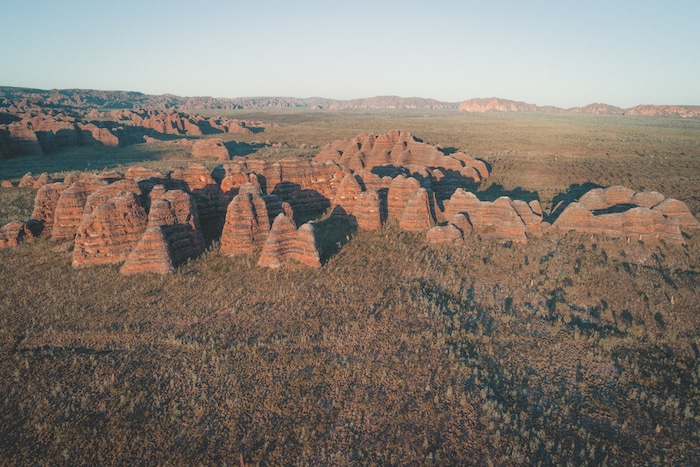
We wake up under a din of birds and warm sunshine. Then, we are soon off again to Purnululu National Park, located 280km north and a Unesco World Heritage site since 1980. It’s home to the remarkable Bungle Bungle range, which is the obvious attraction, but we also found extraordinary gorges, such as the Cathedral and Mini Palm Springs, and sacred Aboriginal sites.
The Bungle Bungles are dramatic from any perspective. From the sky in a helicopter safari, where one can enjoy the limitless expanse of wan scrub, and on the ground, as one walks along these sedimentary rocks and the chaotic meandering of the creeks. “The Bungles were formed partly due to dual stratification – a curious effect of sedimentation”, says the manager of Savannah Lodge, where we put up for two nights. “They are a result of thousands of years of erosion by wind and rain. Water has carved gorges – now walking paths – into the heart of the massif”, he explains, “go watch the Bungles over sunset at Picanily Creek lookout. It’s madness.”
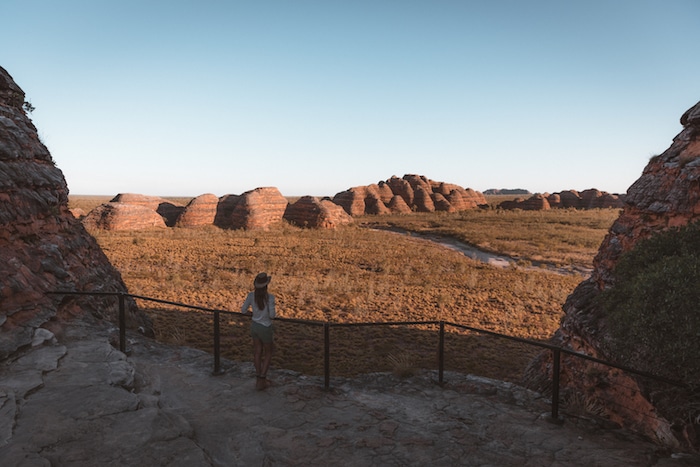
See the Spectacular El Questro
The adventure continues back on the Great Northern Highway. We set off to El Questro, a raw landscape of just under a million acres in the heart of Kimberly. Getting there is no joke – almost six hours drive into the impenetrable desert. The area is marked by extremes of seasonal change, of temperature, distance, colour and human personality. And it’s here, in Kimberly, where we see Aboriginals for the first time.
It does take some determination to get to El Questro. We go beyond the outback and stay at Emma Gorge Resort, nestled in the shadow of the fiery red cliffs of El Questro’s Cockburn Ranges. We come here for the remoteness and isolation. But also for the unparalleled beauty of the landscape. From the air, the wilderness park is a vast and varied tapestry of colours, shapes and textures. At ground level, the detail of its rugged personality is revealed with spectacular clarity.
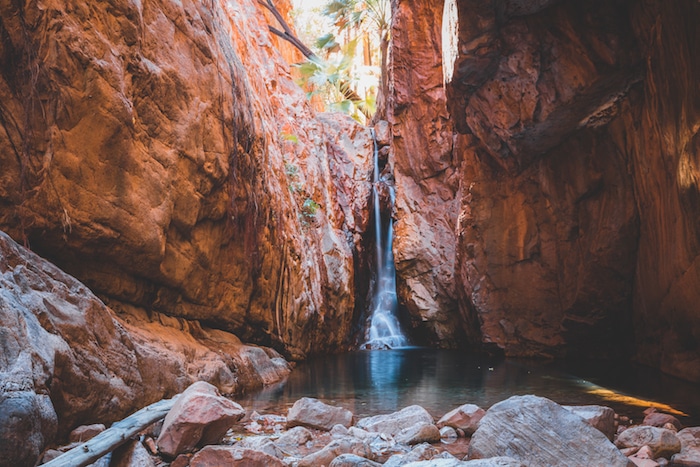
We explore the dramatic gorges, mountains and plains of El Questro by hiking, horse riding and chopper flight. We hike up beyond the waterfalls to find pools for swimming where the crocs cannot reach. The El Questro and Emma gorges are incredible sites that – in the early morning – we have all to ourselves. And later on, when the sun sets, we watch the extraordinary glow taking over Kimberly’s sky – from the very top of Cockburn range and Branco’s lookout.
Drive The Gibb River Road
Half of the fun of coming to the Kimberly is driving the iconic Gibb river road. We leave El Questro and head back to the road, a 650km of largely dirt track running through the heart of the region. The real driving adventure starts.
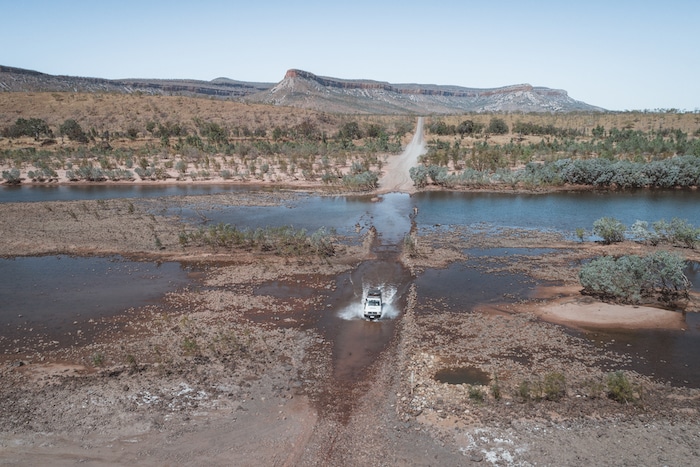
A former cattle trail, the Gibb river road’s first kilometres are the roughest stretch. We drive over the Pentecost River. I’m focused on driving, but I also look for saltwater crocodiles. It’s late August, which means it’s still dry season and road access is at its best. From November through March, it’s an impassable cauldron of tropical torrents and mud. Roads are submerged, and structures can be washed away.
The surrounding countryside is magnificent, and the track offers a tremendous sense of freedom as we pass through the wide-open country. In the next three days, on our way back to Broome, we traverse the Gibb river road and experience diverse sceneries, that range from lush, tropically vegetated river gorges to vast savannah woodlands. We hike up the pristine Manning, and Bell gorges and swim in their pure, clean waters. We camp for two more nights on top of our car, along the “Gibb”, under an extraordinary sky – which in the wild outback is really just business as usual.
All images courtesy of the author.

